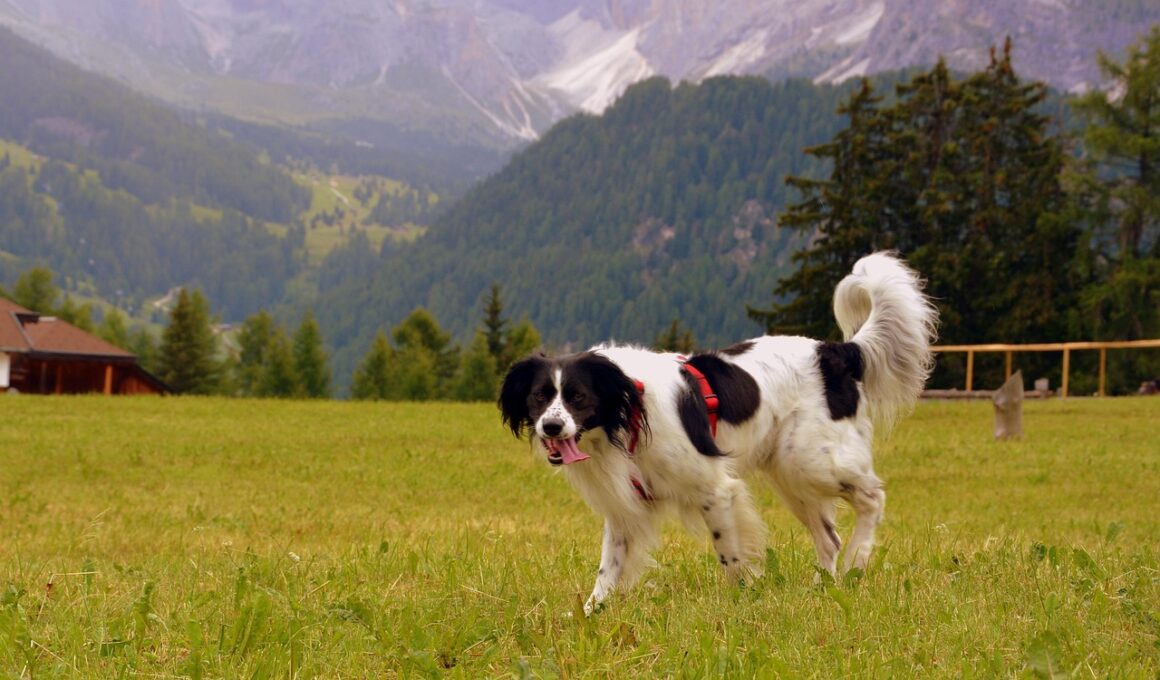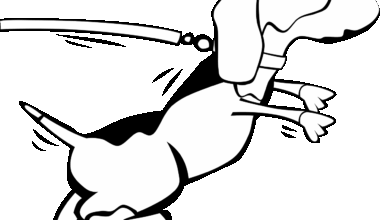Signs of Fatigue in Dogs and Injury Risks During Sports
When engaging in various dog sports, it is crucial to recognize the signs of fatigue in your canine athlete. Fatigue can manifest in several ways, including decreased energy levels, reluctance to participate, heavy panting, and an overall lack of enthusiasm. Additionally, you might notice changes in their posture or gait, indicating they need a break. Dogs that are fatigued may display signs of soreness, such as limping or being sensitive to touch, particularly in the limbs. To ensure your dog remains healthy and injury-free, it is essential to monitor these signs closely during training sessions and competitions. If your dog shows fatigue, promptly allow them to rest. Ignoring the cues can lead to more severe injuries such as strains or sprains, especially if they are overexerted while trying to perform at peak levels. After a session of intense activity, proper recovery is vital, which can include hydration, nutrition, and rest. Warm-ups and cool-downs should also be included in their training regimen to minimize potential injuries and promote well-being.
Understanding Injury Risks in Dog Sports
Dog sports, while rewarding, can pose various injury risks that owners need to recognize. Participation in activities like agility, flyball, or disc dog requires intense physical exertion, making dogs susceptible to injuries like torn ligaments and muscle strains. The competitive nature of these sports may push dogs beyond their limits, particularly if they push themselves harder than their capability. Every dog has limits depending on their age, breed, and physiological condition. An inability to recognize these limitations can lead to injuries that may not only sideline dogs from competition but also affect their long-term health. Additionally, poor training or improper equipment can exacerbate injury risks by causing stress on joints and muscles. It’s highly important that dog athletes are conditioned properly for the specific demands of their sport. An assessment from a veterinarian can provide valuable insights on the physical capabilities and risks associated with various activities. Creating a personalized training program tailored to your dog’s optimal performance and safety will help mitigate risks and maximize their enjoyment in dog sports.
Recognizing the early signs of fatigue is imperative to reduce the likelihood of injury during strenuous activities. These signs can help guide you in determining when your dog has reached its limits. For example, if your dog begins to lag behind or appears less focused, these are indicators that they may be tiring out. Dogs that are fatigued might also exhibit altered breathing, such as excessively heavy panting or rapid breaths. These respiratory changes, when combined with decreased energy levels, indicate a need for immediate rest. Another sign of fatigue can be excessive drooling or trembling, as they may be in distress or pain. Consider integrating shorter practice sessions, particularly with younger dogs who are still developing muscle strength and coordination. Incorporating rest intervals during training can also provide valuable recovery opportunities, which prepares your dog for further training and avoids potential injuries. Pay attention to the environmental conditions, as extreme weather can exacerbate fatigue symptoms and hamper your dog’s performance. A proactive approach to recognizing signs of fatigue is paramount for your dog’s safety and health.
Importance of Recovery in Dog Sports
After any rigorous physical activity, recovery plays a crucial role in maintaining your dog’s overall health. Recovery encompasses rest, hydration, nutrition, and active recovery techniques that allow muscles to heal and strengthen. Hydration is particularly essential as it aids in preventing overheating and supports overall health. Providing access to fresh water during and after activities ensures your dog remains adequately hydrated. Nutrition should also be tailored to replenish energy stores and promote muscle repair. Consider consulting with a veterinarian to determine the best dietary regimen based on your dog’s age and activity level. Implementing active recovery techniques such as gentle stretches, massages, and controlled play helps facilitate recovery by improving blood circulation and reducing muscle tension. It is vital to create a balanced schedule that includes periods of rest and light activity to restore optimal performance levels. Additionally, regular veterinary check-ups can aid in monitoring your dog’s health and assessing any injury risks during training seasons. Fostering a comprehensive recovery plan allows your dog to recharge physically and mentally and promotes longevity in dog sports.
Injuries can often be mitigated with proper preventive measures. Making sure your dog is warmed up and cooled down before and after sports activities is key to preventing injuries. Warming up can involve gentle exercises or light play to gradually increase blood circulation to muscles and joints. Similarly, cool-down sessions count on gradually decreasing activity intensity, providing ample time for the body to recover. Additionally, owners are encouraged to consider canine fitness training programs that focus on endurance, flexibility, and strength, which will improve stability and resilience against injuries. Regularly assessing your dog’s physical condition through veterinary consultations can provide insights into their performance and any underlying concerns. Using appropriate gear tailored to the specific sport also helps in minimizing injuries, such as supportive collars and harnesses, and protective gear depending on the sport. Another factor to consider is the terrain where sports are practiced; uneven surfaces and harsh weather can increase injury risks. Implementing these preventive strategies not only safeguards your dog but can enhance their performance and overall enjoyment in athletic activities.
Emotional Signs of Fatigue
While physical signs of fatigue are often observable, emotional signs can be just as indicative of your dog’s well-being during sports. Dogs may exhibit behavioral changes that signal they are stressed or fatigued, such as excessive whining, avoidance of play, or seeking comfort from their owners. For dogs that are highly competitive or driven, emotional fatigue can occur even when physical signs seem absent. A decrease in enthusiasm during activities can signal that your dog no longer enjoys what they are doing. Some dogs might even become irritable or defensive when fatigued, indicating a potential for further injury. Understanding your dog’s emotional needs and providing supportive training environments can alleviate stress and promote positive experiences. Frequent breaks during training help them recharge emotionally and physically while avoiding burnout. Positive reinforcement can encourage them when they are performing well, while patience is vital during times of fatigue. Being attentive to both physical and emotional signs helps improve the relationship between dogs and their owners, ensuring a healthier and more rewarding sports experience.
In conclusion, recognizing the signs of fatigue and the associated risks during dog sports is essential for ensuring your dog’s health. Awareness of both physical and emotional signs of fatigue allows owners to make informed decisions about their dog’s activities. Fostering a balanced training approach and prioritizing recovery techniques enables dogs to engage safely in their sports of choice. Establishing a thorough understanding of their limits and needs helps in tailoring effective training regimens. Comprehensive recovery strategies involving hydration, nutrition, and rest are paramount for keeping your dog in top condition. Proper preventive measures, including warming up and emotional support, contribute significantly to injury prevention, extending the longevity of active participation in sports. Regular wellness checks and customized training plans can minimize injury risks and ensure optimal performance. As responsible dog owners, fostering partnerships built on trust, communication, and understanding will lead to both enjoyment and health in the athletic endeavors shared between dogs and their humans. By following these guidelines, you can support your furry companions as they excel in their sports, remaining healthy and happy.


